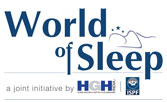Modern Mattress Retail Market Dynamics

The current market study is based on the physical identification of 16,000+ mattress-selling outlets in 115 cities and then a detailed survey of 7200 outlets.
The mattress market is a unique and complex space where the strengths and weaknesses of distribution channels can be quite pivotal in the success and performance of any player and in turn for the overall industry.
ISPF plans to track this market periodically to identify market trends with respect to retail channels, product mix and pricing. This will surely help companies to face changes sweeping the marketplace, in terms of new players, concepts, channels and innovations in the market.

Retail Market Landscape
Let’s start with the universe of retail outlets in different channels that stock modern mattresses.
It is estimated that for every one lakh people, there are 11 mattress-stocking outlets resulting in almost 40,000 such outlets in urban India. Nearly half of them are furniture stores. One cannot ignore the presence of appliance stores (with preponderance in the South Zone) and furnishing stores as well. Towns with a population of more than 1 lakh account for 66% of the mattress stocking outlets.
Average footfall at these retail outlets is significantly higher than the average mattress sale. Retail players will have to figure out innovative ways of increasing the conversion of walk-ins.
If you are excited by this extensive distribution network, dial ISPF for further details and embark on an expansion drive.
Inside the Consumer’s Mind
Almost half of the consumers buy foam mattresses while the next preferred type is the coir mattress. A large chunk of small-town consumers and those in the South and East prefer coir mattresses.
What the study reveals is that most customers prefer buying a mattress within a price range of INR 5000 – INR 10000. On average, they pay INR 9500 for an organized sector brand and INR 6500 for an unbranded one (end consumer price includes GST).
Cash is still king for 73% of the consumers buying mattresses while only 13% pay with plastic money.

Annual Sales of Modern Mattresses
Approximately 1.8 million mattresses were sold every month during October – December 2018 through permanent stores. The annual sales can be assumed as 10 times this volume owing to the seasonality pattern. That is quite a number, isn’t it?
Southern region (33 percent) reigns over other regions like the West (30 percent) and North (27 percent) in the country. The original metro cities comprising Delhi, Mumbai, Kolkata and Chennai contributed nearly 16 per cent of category sales, with Delhi and Mumbai being the highest contributors.
Sales value growth was pegged at 8% in 2018! This was when most consumer durable companies struggled to get into positive territory.
The Pecking Order
So, who is leading the pack in getting the customers fast and furious, after all?

The top names that came up in the study are two leading players namely Sleepwell and Kurlon. These flagship brands jointly account for nearly half the organized sector market.
Differentiated but consistent business strategies can lead to success. The numeric distribution of Kurlon is significantly higher than for the other brands. Kurlon also seems to command a higher reach in Furniture and furnishing outlets, while Sleepwell leads in mattress outlets, particularly exclusive brand shops.
Duroflex &
Centuary are strongest in Appliance stores; Godrej is stronger in Furniture
stores while Peps has nearly equal volumes coming from both Furniture and
Furnishing stores.
A regional story also comes out quite clearly. Sleepwell is strong in the North and West regions while Kurlon leads in the South and East parts of the country. Godrej has a sizeable share in the East while Duroflex, Centuary and Peps have a substantial presence in the South zone
The study’s crucial revelation is the grip of the unorganized sector despite an organized sector that is moving forward with new formats, channels and innovations. The former still controls 54% of the market. This is even higher in the cities with more than 40 lakh population. Yes, as much as we would like to put the blinkers on, the sale of mattresses seems to be the highest in the unorganised sector even today. This shows the level of penetration and selling efficiency of the unorganised sector. It’s time we start introspecting, learning, unlearning and relearning. As we can see, there are many layers to a mattress and the same applies to the market, too. These findings are a good chance to pause, sit down, reflect and leverage what the study has unlocked this time – challenges, gaps, hidden advantages, obvious pitfalls and a lot of room to be at the top of the bed. Get started. Now.
For More Information Contact – ispf.0813@gmail.com

